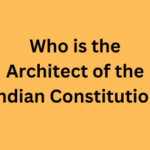World Sickle Cell Awareness Day

June 19th was officially designated as World Sickle Cell Awareness Day; observed annually with the goal to increase public knowledge and an understanding of sickle cell disease, and the challenges experienced by patients and their families and caregivers.
Sickle cell disease is an inherited blood disorder that affects red blood cells. People with sickle cell disease have red blood cells that contain mostly hemoglobin S, an abnormal type of hemoglobin.
Sometimes these red blood cells become sickle-shaped (crescent-shaped) and have difficulty passing through small blood vessels. When sickle-shaped cells block small blood vessels, less blood can reach that part of the body. Tissue that does not receive a normal blood flow eventually becomes damaged. This is what causes the complications of sickle cell disease. There is currently no universal cure for sickle cell disease.
Hemoglobin is the main substance of the red blood cell. It helps red blood cells carry oxygen from the air in our lungs to all parts of the body. Normal red blood cells contain hemoglobin A. Normal red blood cells that contain hemoglobin A are soft and round and can squeeze through tiny blood tubes (vessels). Normally, red blood cells live for about 120 days before new ones replace them.
People with sickle cell conditions make a different form of hemoglobin A called hemoglobin S (S stands for sickle). Red blood cells containing mostly hemoglobin S do not live as long as normal red blood cells (normally about 16 days). They also become stiff, distorted in shape and have difficulty passing through the body’s small blood vessels. When sickle-shaped cells block small blood vessels, less blood can reach that part of the body.
LEARNING FROM HOME/ WITHOUT CLASSES/ BASICS
Blood is made up of red blood cells, white blood cells and platelets and liquid called plasma.
- Red blood cells, also called erythrocytes, which carry oxygen throughout the body, carry around an important chemical called hemoglobin that gives blood its red color;
- White blood cells also called leukocytes, which fight infections;
- Platelets, thrombocytes, are cells that help you stop bleeding if you get a cut;
- Plasma, a yellowish liquid that carries nutrients, hormones, and proteins throughout the body.
Bone marrow — that goopy stuff inside your bones — makes the red blood cells, the white blood cells, and the platelets. Plasma is mostly water, which is absorbed from the intestines from what you drink and eat, with the liver supplying important proteins.
Your blood group is identified by antibodies and antigens in the blood.
Antibodies are proteins found in plasma. They’re part of your body’s natural defenses. They recognize foreign substances, such as germs, and alert your immune system, which destroys them.
Antigens are protein molecules found on the surface of red blood cells.
The ABO system
There are four main blood groups defined by the ABO system:
Blood group A – has A antigens on the red blood cells with anti-B antibodies in the plasma
Blood group B – has B antigens with anti-A antibodies in the plasma
Blood group O – has no antigens, but both anti-A and anti-B antibodies in the plasma
Blood group AB – has both A and B antigens, but no antibodies






0 Comments